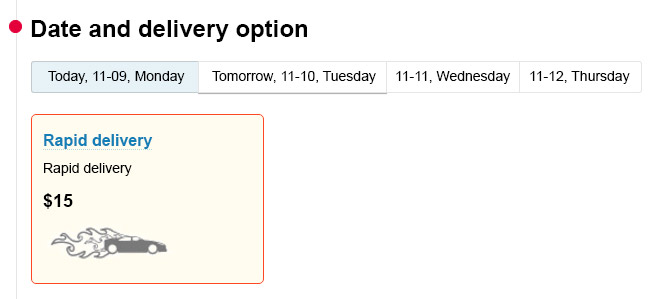dia$par is responsible for optimizing and balancing the loading of the delivery vehicles. Without people's interference the effectiveness has grown by 30%.
We have already written about the Japanese practice of heijunka, or levelling, from the Toyota Production System (TPS) as applicable to goods acceptance and purchase at the warehouse.
Here we’ll discuss levelling practice in retail delivery business processes taking the example of Ulmart Co.
Original delivery conditions:
- the earliest delivery available is on the following day;
- there are some fixed time intervals to choose from (e.g. till midday, till 6 p.m., till 10 p.m.);
- at a fixed price — from among several price options depending on the load’s weight and dimensions (by courier, car, minivan and the like).
Quite an ordinary situation.
But here’s what it leads to:
- 80 % of customers want evening deliveries;
- consequently, all the delivery vehicles are busy in the evening (mainly being stuck in traffic) but most of them are idle in the daytime;
- the need to load most of the goods to be delivered in the evening obviously results in uneven delivery workload on warehouse personnel.
And here is our solution:
- dia$par prices each time interval automatically depending on the number of free vehicles in that interval: the more vans/drivers are idle, the lower is the price. This business logic is essentially identical to airlines" pricing logic.
- If the customer does not care about the delivery hour, he may specify no time interval at all — just the date. It is the cheapest option for the buyer, and for the dia$par router it is the most convenient opportunity to configure an ideal route given the traffic hindrances and the need for the most efficient use of both vehicles and delivery personnel.
- An "urgent delivery" option (for today) is introduced. Of course, it’s possible if there are free vehicles.


And, unlike airlines that sell an extremely standardized product (two same class tickets for the same flight are perfectly identical), dia$par will calculate delivery price and time available for each order individually.
In addition to the obvious diversity of weights and dimensions (do we deliver a tablet PC or a two-compartment fridge?), the sequence of the physical warehouses (including remote logistic hubs) from which the goods must be collected into a complete order may vary depending in the goods listed.
That’s it.
And at the output end we have some 40% of the clients who used to order evening deliveries but now expect them at more convenient hours (for Ulmart logisticians).
The number of the deliveries broken off as the "client is absent" decreased by 10%.
The evening shift of the warehouse delivery men can breathe again.
Delivery labor productivity (deliveries to personnel strength ratio) increased by one-third or more.